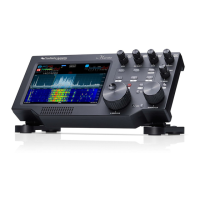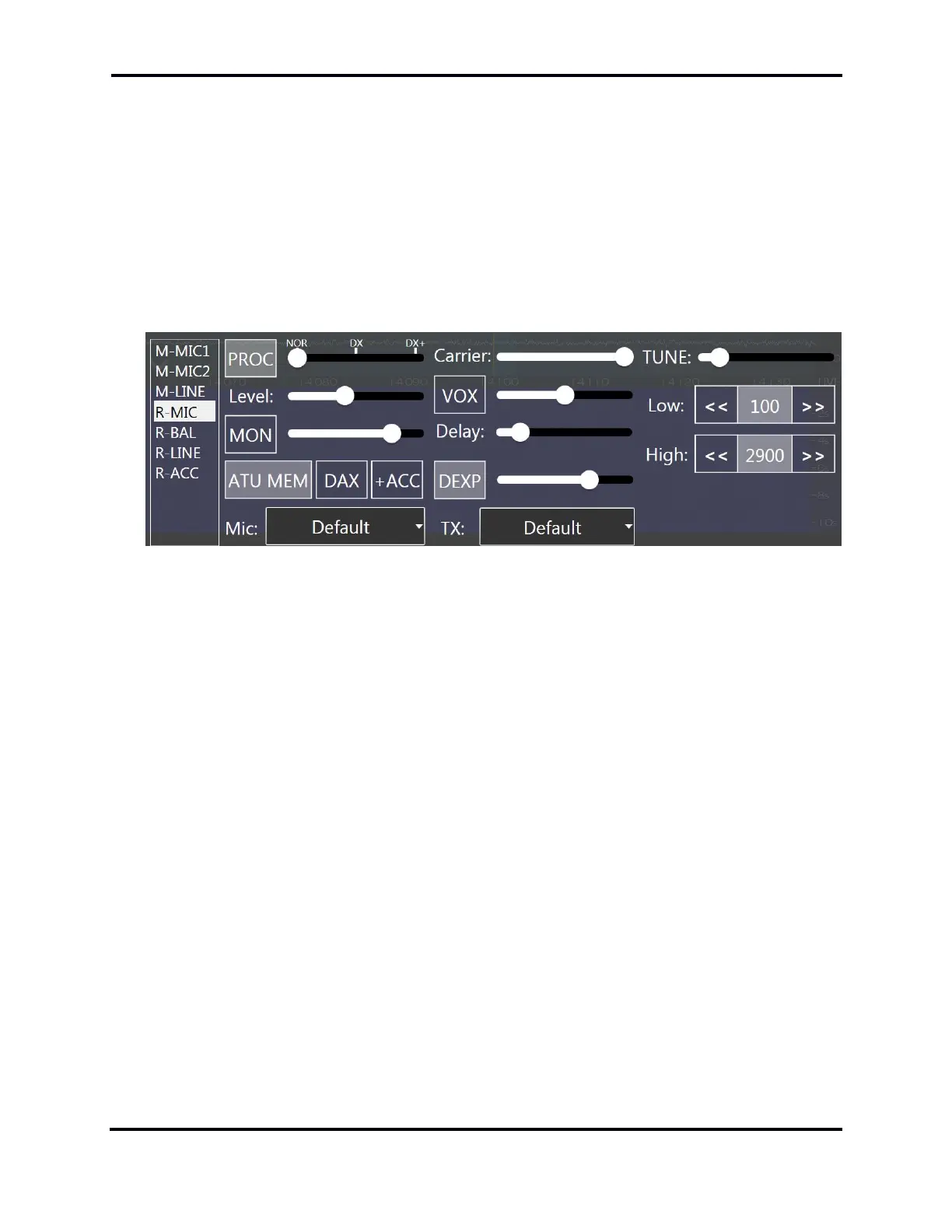FLEX-6000 Signature Series – Maestro User Guide
Page 162
Copyright 2019 FlexRadio Systems. All Rights Reserved.
33.6 TX MENU
The Maestro TX Menu contains the controls and metering required for optimal FLEX-6000 RF
transmission. The menu is displayed in a number of configurations depending on the demodulation
mode of the Slice Receiver that controls the transmitter.
To display the TX Menu, press the inner knob of the transmitter multi-function knob inward, or tap
the RF PWR annunciator in the middle of the upper bar of the main display. Press or tap again to
remove the menu.
33.6.1 Audio Modes Transmitter Menu
In the audio modes configuration, the transmitter menu contains microphone selections, audio
processor, monitor, DAX, VOX, Downward Expansion, bandwidth filter and other controls:
• The Microphone Selection Menu at the left of the transmitter menu provides the operator
with a choice of microphone inputs on the Maestro device and on the FLEX-6000 transceiver.
Tap on a choice to select it.
o M-MIC1 is the RJ45 MIC 1 input on the back panel of the Maestro.
o M-MIC2 is the 1/8
th
inch TRS MIC 2 input on the back panel of the Maestro.
o M-Line is the 1/8
th
inch TRS Line Input on the back panel of the Maestro.
o R-MIC is the 8 pin Foster microphone input on the front panel of the FLEX-6000
transceiver.
o R-BAL is the balanced XLR input on the back panel of the FLEX-6000 transceiver.
o R-LINE is the balanced ¼ inch TRS input on the back panel of the FLEX-6000
transceiver.
o R-ACC is the line level input that is part of the D-Sub accessory connector on the back
panel of the FLEX-6000 transceiver.
• Processor (PROC) button: Tapping this button will enable the W9GR Controlled Envelope
Single Sideband (CESSB) DSP algorithm resulting in additional talk power. The speech
processor may be on or off and has three different settings when on. In the NOR or normal
setting, the processor provides minimal additional gain and simply prevents audio peaks
from clipping or producing power in excess of the set level. In the DX setting, some
compression is provided to the audio to increase the overall sideband envelope which results
in a stronger signal that may be more readily heard at a distance. The DX+ setting adds even
more compression increasing your talk power or “punch” without incurring significant audio
distortion. DX+ is most effective if you increase the low-cut TX filter to between 200-400 Hz

